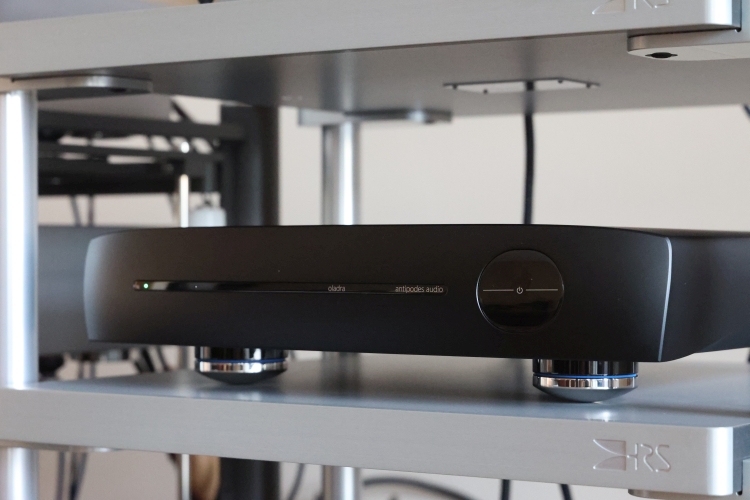Meridian Control 10 Sooloos control unit
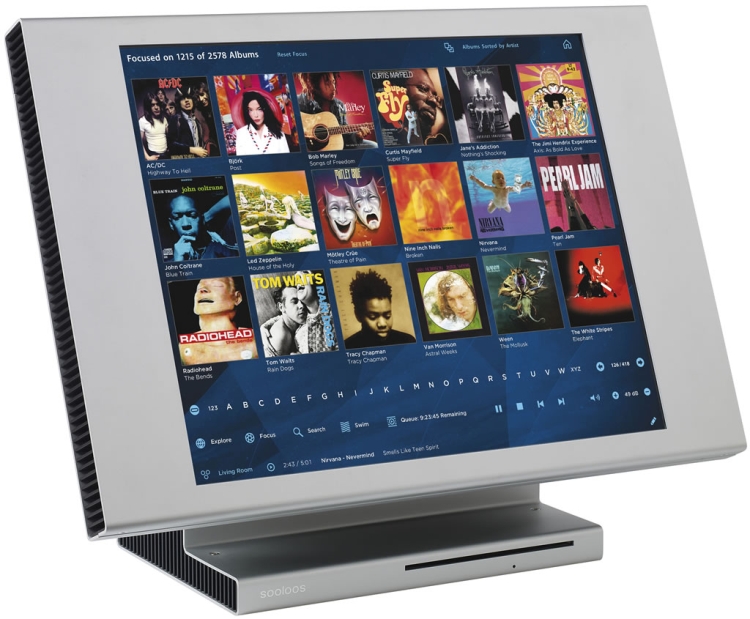
Discovering the original Sooloos experience
After my Sooloos experience kicked off with the MC200 and continued through the MD600, MS600, and MS200 and I finally purchased the 818 Reference Audio Core with which I have now lived for half a year, I got curious about the original Sooloos experience.
Until now I had used the iPad as a control interface, but originally Meridian supplied a standalone touch panel called the Control 10. The C10 is an older product and is no longer available. Its replacement is called the C15, which is the same thing, but with built-in Store functionality.
Review sample supplied by Dutch distributor Viertron.
Retail price C15: 5.950 euro
Control 10 is the predecessor of the C15
The C10 is what you could call the granddaddy of the Sooloos music system. It is the unit that talks to the library and streams the music to an endzone. In Meridian speak the C10 is called the Core, the library is called the Store and the endpoint is called Source. In the old Sooloos system, these three units were needed as separate boxes. Granted: the C10 is also a Source, or an endzone if you will, but only with a digital coaxial output. And speakerlink of course, but as I don’t have an all-Meridian system, I’ll leave that out of the equation.
These days, Sooloos moved forward and even got a name change: MDMS, or Meridian Digital Media System. But Meridian are being low-profile about this and since it is still called Sooloos in various applications, I’ll stick to that name for this review. In moving forward, Meridian also implemented more versatility into the system. The follow-up of the C10, the C15 can also act as Store, in addition to Control and Source, albeit still in coaxial digital form only. The unit I use as store, the Meridian MD600, also has the capability to work as Core, which means that technically the C10 isn’t needed for Sooloos music playback.
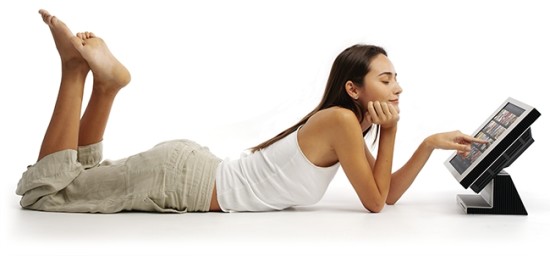
Confusing as the above may sound to the non-Sooloos user, the system is actually very, very simple to install. You just have to make sure that you enable the Core on only one unit and the rest is figured out by the components themselves. It doesn’t matter how many Store and Source units you have. The Stores are simply added up and the combined libraries just appear as if they were one. The Source-endpoints can be selected individually, or, if you so wish, simultaneously. This all works intuitively and flawlessly.
Oh by the way: I can still control the C10 with my iPad, just like I used to do with the MD600. This is an important aspect of the system: its utter user-friendliness. With Sooloos you definitely do not need to be computer-savvy in any way.
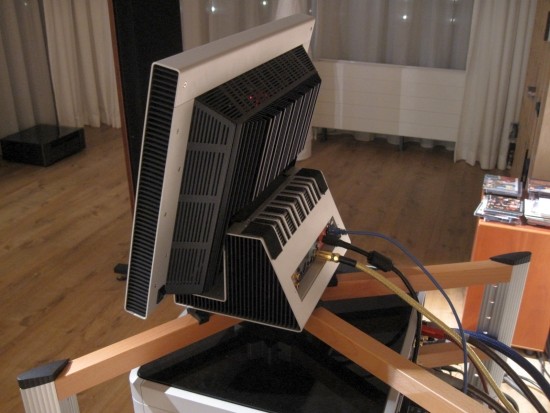
Control 10 using S/PDIF out
Naturally, I was most curious about the audible differences, especially as to how the C10 would perform using the coaxial digital output. So I connected the unit with a Wireworld Gold Starlight III+ digital coaxial cable to the Levinson 390S CD player. I would normally use the 360S DAC but I have sold that one some time ago after I concluded that SPDIF was definitely no longer the way to go. Nevertheless, the 390S functions very well as a DAC, ever since its capacitors were replaced after 10 years of service. The sound of the C10 via the Levinson was predictably colorful, harmonically rich, and smooth. Due to my earlier experiences with Sooloos, I expected no different really. From memory, the sound was better than I recall it when I used the Meridian MC200 into the Levinson DAC. Although the C200 sounded better than any computer that I had used as a source until then, the C200 also had this strange darkness to the sound, whether used as a source or as end zone, always did the treble seem to lack some spark. I noticed this in a friend’s system too, when I brought the C200 over to him. Anyway, the C10 doesn’t exhibit this phenomenon. Its treble was just fine.
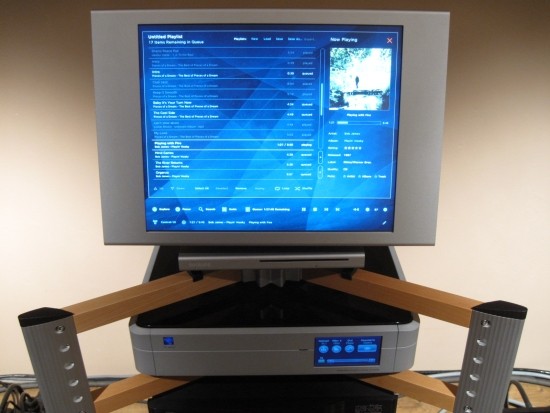
I also connected the C10’s digital coaxial output to the PS Audio PWD MKII. Although there was now more attack and liveliness, still I wasn’t entirely happy with the sound. As a last check, I also connected the C10’s coax out to the Meridian 818 Reference Audio Core. This produced a more known sound: more agile and nicely open without being forced, but here too, the sound lacked the speed and transient snap that I am used to when listening to Sooloos over network cable.
Better equipment can quickly spoil a person. Now that I was used to my MD600+818 system, I found going back to SPDIF sound to be difficult. If you’ve always listened like that you may not know what I am talking about. But if you know the difference between a clock-linked Wadia transport and DAC and a slaved Wadia DAC, you know exactly what I mean when I say that the C10 was lacking PRAT (speed/momentum). As good as it was, and it was very good indeed, this wasn’t as good as I know Sooloos can sound. This is no fault of the C10, rather an anticipated shortcoming of the SPDIF connection. Previously I wouldn’t have found fault in this connection but recent experiences with USB and Sooloos over network cable made it very clear that there is something wrong with SPDIF.
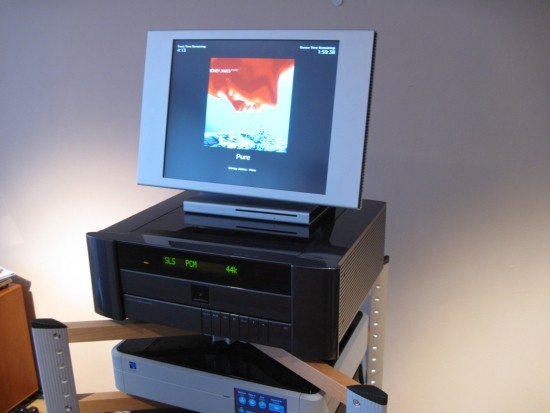
Control 10 using network cable to 818
Currently, we know is that jitter is what spoils it in the time domain and indeed it seems like this is the culprit here, too. I won’t pretend to know it all and I am certain that we still have a thing or two to learn when it comes to understanding how exactly digital audio playback is influenced but upon selecting the Meridian 818 as the Source (endpoint), and still using the C10 as the Store, the above is clearly substantiated even after listening for only 30 seconds. To be clear: I have lived with a reference Sooloos system for half a year now, in the shape of the MD600 and the 818, and I know very well what that system is capable of. Going back to SPDIF was like torturing myself. I did the switch a couple of times but I am sure: SPDIF is not for me anymore. But that’s fine. The C10 can do very well without it. But still something didn’t sit right with me. The C10 is a loaner device and it is new to me but I know my own system very well. And after a few songs, I was certain that the C10, controlling the MD600 and sending music to the 818 still wasn’t producing the sound as I was used to.
Back to pure MD600 and 818 operation
Now it was time to take the C10 out of the equation. The MD600 was reconfigured to serve as Core and it was talking to the 818 directly again. I played the same tracks and… I’ll be… ! There was indeed a difference, and it wasn’t subtle at all!
Now, whether it was better or worse I haven’t decided just yet and this may well be a very relative matter, dependent on personal taste and system synergy. But let me just describe the differences and let you judge for yourself. The C10 with MD600 and 818 sounded confident, full-bodied, smooth, and fluid. But not as fluid and refined as I was used to. The MD600 and 818 sounded lighter on their feet: airier, more fluid, more subtle, and a lot more refined. I’d say that the MD600-818 combo had greater resolution and the MD600-C10-818 combo had bigger balls. Which is better? I still can’t be sure, but for me, it was the low-level detailing and airiness of the MD600-818 combo that won me over. The cards may ly different for you.
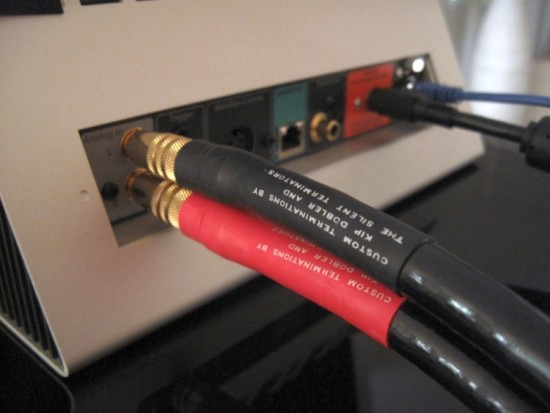
Analog in = Analog out
It wasn’t until this review was finished that I read somewhere that the cinch connectors on the C10’s rear labeled “analog in” are actually analog outputs! So, I set it all up again and now also listened to the analog outputs using a Cardas Hexlink 5C cinch cable. The sound is more upbeat and coherent than when using coaxial digital out but still carries what I have become to recognize as the C10’s signature sound: Full, round bass and a smooth midrange and treble. The resolution, articulation, and soundstaging stay behind but otherwise, this analog output is enjoyable and very mildly mannered. It reminds me of how the MC200 sounded stand-alone, only a little weightier. The one thing that no Sooloos product has ever done is to sound mechanical or computer-esque and nor does the C10, no matter how you connect it.
So, what does the C10 offer over iPad operation?
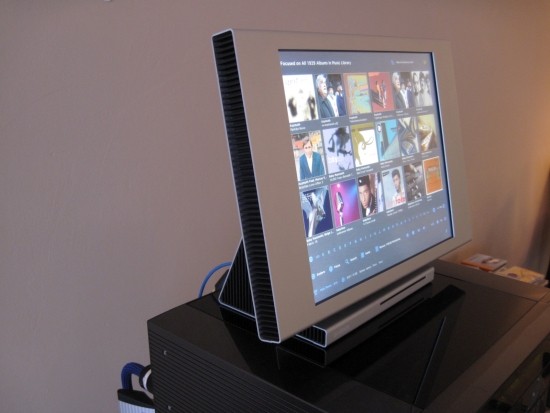
Obviously, the big advantage of the standalone C10 is that you have a large touchscreen that lets you control all the functionality that the system has on offer (not just a subset like is the case with the iPad app) plus a dedicated CD slot for building your media library. With the C10 there is no need for a computer, as long as your library will be built with CD material only. If you want to import files that are resident on a computer however then you’ll still need to use Control:PC or Control:MAC, just like you do when running the Sooloos system without a dedicated Control unit.
I had read that while the iPad app is nice and convenient, it couldn’t live up to the standard of the real Control unit. It was said that the original is much faster and offers an overall better experience and I was eager to find out. Is the C10 faster? It certainly is, if you take artwork scrolling as a benchmark. Pages full of album covers just appear instantly. Big downside of the C10 however is that the screen is of the resistive type, not conductive, as is the case with the iPad. Clicking buttons on the C10 required me to apply a lot of pressure. So much so that I developed the method of holding my hand palm down and tapping quickly with the upside of my fingernail. Another thing the iPad spoiled me for is scrolling lists and browsing albums by swiping over the screen: the C10 doesn’t allow that. Instead there are small dedicated back and forward “buttons”. Of course, this was all normal before the iPad came along and in that sense it really changed the game. As for overall speed: I think that the reports I have read about the iPad being much slower than the real thing must have been aimed at earlier versions of the Core Control app, or even the Sooloos app before that. Seen in that light I can only conclude that the iPad app has come a long way.
The C10 does offer some nice extras overusing the Sooloos system with iPad only. I already mentioned full functionality and that includes starring albums and editing metadata. Also nice is the way you can configure all networked Sooloos components in your system. Instead of having to approach them in a browser by IP address, the C10 just finds them for you and displays them all in one place where you can configure them. For example, you need to disable the core on the MD600 if the C10 is controlling the system. Mind you the system does work with two cores (I tried of course) but cueing tracks from the browse screen isn’t possible and perhaps some other functionality is also lost. The system will keep alerting you until you do something about it. It does this by flashing a mail icon. If you click it you get a nice explanation of the problem and a suggested fix. How’s that for an alternative to nondescript Windows messages? Also, you can still operate the system from a PC or Mac and this is all seamlessly. What’s really nice is that the C10 displays large album art, with selectable extended added info such as trackname, playing time, and remaining time. Oh, and the C10 is whisper-quiet: there must be a hard disk inside, but it is probably of the 2,5-inch variant or perhaps SSD, either way I haven’t been able to hear it. There are no fans inside and the processor is convection-cooled by use of the cooling ribs on the rear. The unit does get quite warm but never hot.
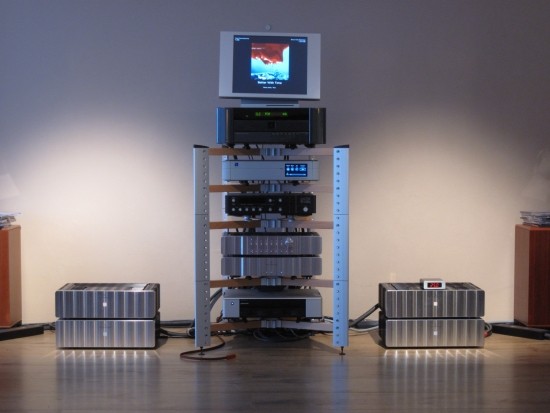
Conclusion
The C10 today is still a stylish device and it offers the full seamless, foolproof Sooloos experience that the system is famous for. The C10 is perfect for people who don’t want to be bothered with computers. But in my view, the C10 is also dated. Its resistive type touch screen seems old-fashioned compared to more modern conductive types and has a limited viewing angle, isn’t very sharp, and has quite a bit of clouding and edge bleed. Compared to my 17-inch Macbook Pro it’s just not a very good screen. Display quality aside, the extra functionality that it offers over the iPad app may or may not be enough to convince a prospective buyer to shell out the extra cash. Networked sound quality is very good and on par with other Sooloos products, but there is an audible difference between MD600+C10+818 and MD600+818. Preference for one or the other will depend on personal taste and system synergy.
I wouldn’t recommend using the S/PDIF output. Not because the C10 does something wrong, but because networked sounds so much better. It is important to understand that the C10 is an older product. Its follow-up the C15 (not reviewed here) also offers built-in Store capacity and is a more interesting offer price-wise because unless you have a very large collection, you won’t need to purchase a separate Store unit.
Sooloos is now Roon – try it for yourself, on any hardware of your choosing
Videos on the Hifi-Advice YouTube Channel
How Sooloos became Roon
HFA Front Page







